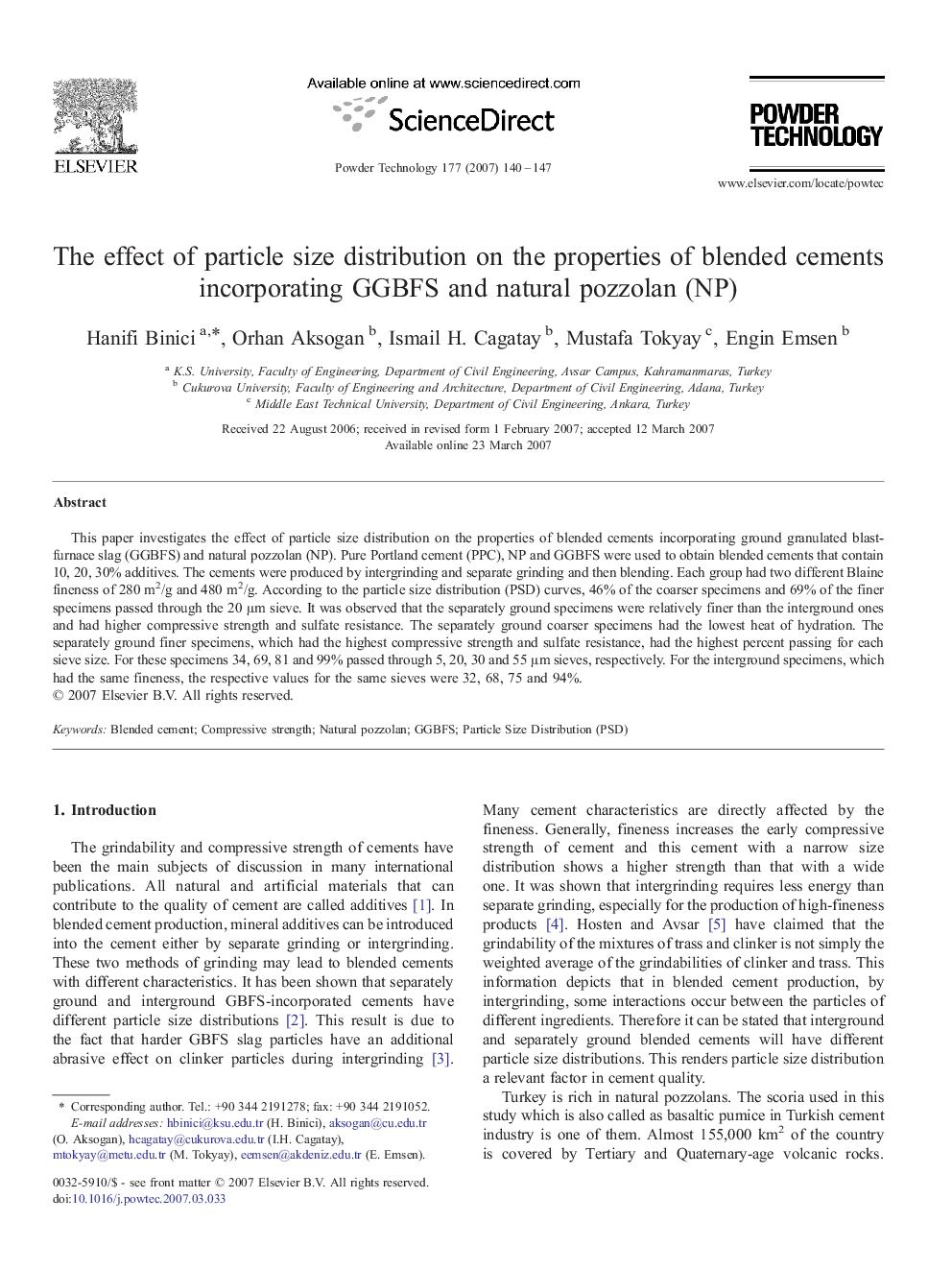| Article ID | Journal | Published Year | Pages | File Type |
|---|---|---|---|---|
| 238807 | Powder Technology | 2007 | 8 Pages |
This paper investigates the effect of particle size distribution on the properties of blended cements incorporating ground granulated blast-furnace slag (GGBFS) and natural pozzolan (NP). Pure Portland cement (PPC), NP and GGBFS were used to obtain blended cements that contain 10, 20, 30% additives. The cements were produced by intergrinding and separate grinding and then blending. Each group had two different Blaine fineness of 280 m2/g and 480 m2/g. According to the particle size distribution (PSD) curves, 46% of the coarser specimens and 69% of the finer specimens passed through the 20 μm sieve. It was observed that the separately ground specimens were relatively finer than the interground ones and had higher compressive strength and sulfate resistance. The separately ground coarser specimens had the lowest heat of hydration. The separately ground finer specimens, which had the highest compressive strength and sulfate resistance, had the highest percent passing for each sieve size. For these specimens 34, 69, 81 and 99% passed through 5, 20, 30 and 55 μm sieves, respectively. For the interground specimens, which had the same fineness, the respective values for the same sieves were 32, 68, 75 and 94%.
Graphical abstractThe amount of particles passing the sieves below 45 µm of the separately ground blended cement specimens had more than that of the interground ones by about 3.5%. Particle size distribution curves in the figure indicate that the interground blended cement specimen D is the coarsest of the five cements tested.Figure optionsDownload full-size imageDownload as PowerPoint slide
